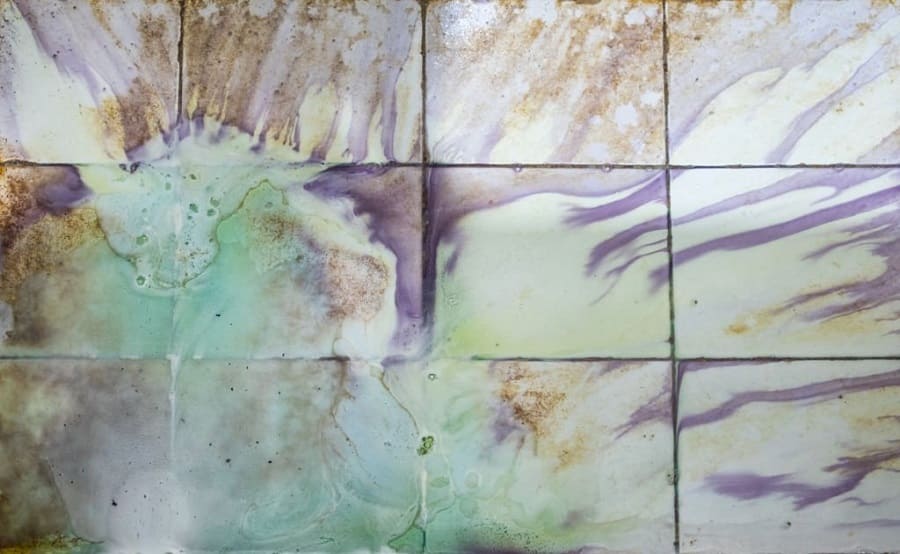
Cleaning and bleaching are two different processes. Cleaning involves removing dirt, dust, and grime from a surface using water, detergent, and some physical effort. Bleaching, on the other hand, is a powerful disinfectant that is used to kill germs and bacteria. Bleach is a highly effective cleaner that can remove tough stains, but it can also be harmful if used improperly.
It is important to remember that bleach should not be used on all surfaces. It can cause discoloration and damage to certain surfaces, such as fabric, leather, and some types of tile. Bleach should only be used on surfaces that are resistant to its effects, such as porcelain and ceramic tiles.
What Is the Best Grout Cleaner for Tile Floors?
While bleach is a powerful disinfectant, it is not necessary to use it for every cleaning task. Bleaching is most useful in situations where you need to disinfect a surface, such as in the bathroom or kitchen. However, in situations where all you need to do is get rid of dirt or grime, you can simply use soap and water. It is also important to use bleach in moderation and to follow the instructions on the label as overuse can lead to bleach stains or other damage to surfaces.
Bleach stains on bathroom tiles can be frustrating and can ruin the appearance of your bathroom. Luckily, identifying and removing them is not a complicated process. By examining the discolored area, performing a test, taking preventive measures, and using the right cleaning products, you can effectively restore the beauty of your bathroom tiles. Be careful when using bleach and always follow the right cleaning instructions to avoid future stains. And if you’re in doubt of your ability to remove the bleach stains, don’t hesitate to seek professional help. Your bathroom’s appearance is worth it! How To Fix Discolored Tiles on The Shower Floor?
Bathroom tiles provide a beautiful and durable flooring option. However, constant exposure to water, soap scum, and other bathroom products can lead to stains and discoloration. One popular and effective method of cleaning bathroom tiles is by using bleach. While bleach can effectively clean grout and tiles, its harsh chemicals can also cause damage over time. Additionally, if left on the tiles for too long, bleach can cause stains and discoloration. If you’re dealing with bleach stains on your bathroom tiles, there are steps you can take to remove them and restore your tiles’ original shine. With proper care and maintenance, your bathroom tiles can stay beautiful and clean for years to come.
There are ways to remove these stains and restore the shine and beauty of your bathroom tiles. With the right tools and techniques, it is possible to eliminate bleach stains and keep your bathroom looking clean and fresh. It is important to always follow the recommended cleaning guidelines for your tiles and avoid using harsh chemicals that can cause unnecessary damage. By taking the appropriate steps, you can maintain the condition and appearance of your bathroom tiles for years to come and enjoy a pristine and hygienic bathroom.
If you have accidentally spilled bleach on your bathroom tiles and caused discoloration, here are some steps to help you remove bleach stains:
If the stain persists, you can try using a commercial grout cleaner or a mixture of hydrogen peroxide and baking soda instead of water and baking soda. Be sure to read the instructions carefully before using any cleaning products on your tile surface.
While bleach is a powerful disinfectant, it is not the only option available. There are several alternative cleaning agents that are just as effective at killing germs and bacteria. Some of these alternatives include hydrogen peroxide, baking soda, and vinegar. These can be used in place of bleach to clean and disinfect surfaces in your home.
Hydrogen Peroxide
Hydrogen peroxide is a great alternative to bleach for disinfecting surfaces. It is a powerful oxidizer that kills germs and bacteria by breaking down their cell walls. It is also a natural chemical that is safe for the environment and does not leave toxic residues.
To use hydrogen peroxide as a disinfectant, simply pour it into a spray bottle and spray it onto the surface you wish to clean. Let it sit for a few minutes, then wipe it off with a clean cloth or paper towel. You can also use it to remove tough stains and whiten clothes by adding it to your laundry.
Baking Soda
Baking soda is another effective alternative to bleach for cleaning and deodorizing. It is a natural abrasive that can remove tough stains and grime from surfaces without causing damage. Baking soda can also be used to eliminate odors from your home by absorbing them.
To use baking soda as a cleaner, mix it with water to form a paste and apply it to the surface you wish to clean. Let it sit for a few minutes, then scrub it with a soft-bristled brush or sponge. Rinse with water and dry with a clean cloth.
Vinegar
Vinegar is a natural disinfectant that is effective at killing germs and bacteria. It is also a great all-purpose cleaner that can remove stains, grease, and grime. Vinegar is a safe alternative to bleach that is non-toxic and does not harm the environment.
To use vinegar as a cleaner, mix equal parts of water and vinegar in a spray bottle and spray it onto the surface you wish to clean. Let it sit for a few minutes, then wipe it off with a clean cloth or paper towel. Vinegar can also be used to remove tough stains by soaking the stained item in a mixture of vinegar and water.
Will vinegar remove bleach stains from tiles?
While vinegar is a great general cleaner, it might not be the most effective for bleach stains. It’s better to try a more potent cleaner like hydrogen peroxide or a commercial tile cleaner. However, vinegar can help neutralize any remaining bleach residue and restore the tile’s pH balance.
How do I prevent bleach stains on bathroom tiles?
Answer: To prevent bleach stains, always dilute bleach according to the product instructions and rinse the area thoroughly after use. Avoid splashing bleach on tile surfaces. Consider using a non-bleach cleaner for regular cleaning and only use bleach for stubborn mold or mildew.
Can I use bleach to remove bleach stains?
Answer: Ironically, using more bleach to remove bleach stains is generally not recommended. It can actually set the stain or even damage the tile. Opt for a different cleaning agent like hydrogen peroxide or a commercial tile cleaner.
How do I remove bleach stains from grout?
Answer: Bleach stains on grout can be more challenging to remove. You can try a mixture of baking soda and water, or a commercial grout cleaner. For stubborn stains, a hydrogen peroxide solution might help. Always test the product in an inconspicuous area first.
Will bleach stains fade over time?
Answer: Bleach stains typically don’t fade on their own. They can become less noticeable over time as dirt and grime build up, but the stain will still be there. It’s best to address the stain as soon as possible.
Can I use a magic eraser to remove bleach stains?
Answer: A magic eraser can be effective in removing some types of stains, but it might not be the best choice for bleach stains. It’s worth trying on a small area first to see if it works without damaging the tile.
How do I remove bleach stains from colored tiles?
Answer: Be cautious when using any cleaning product on colored tiles, as it could cause discoloration. Always test the product in an inconspicuous area first. A gentle cleaner like a mixture of baking soda and water is often a safe starting point.
Can I use a tile and grout cleaner to remove bleach stains?
Answer: Many commercial tile and grout cleaners are effective at removing bleach stains. However, it’s essential to read the product label and follow the instructions carefully.
How do I prevent bleach stains from coming back?
Answer: To prevent bleach stains from returning, avoid using excessive amounts of bleach, rinse the area thoroughly after cleaning, and consider using a non-bleach cleaner for regular maintenance. Regular cleaning can also help prevent the buildup of dirt and grime, which can make stains more noticeable.
Conclusion
In conclusion, it is important to understand the difference between cleaning and bleaching, and when to use each method. While bleach is a powerful disinfectant, it is not necessary for every cleaning task and should be used in moderation. Also, if you accidentally leave bleach stains on bathroom tiles, there are several methods to remove them. So, the next time you clean your home, keep these tips in mind and use the appropriate cleaning agents to keep your home clean and free of germs and bacteria.
In summary, cleaning your home is an essential task that should be done on a regular basis. However, it is important to understand the difference between cleaning and bleaching and when to use each method. If you ever face the problem of bleach stains on bathroom tiles, don’t worry, there are several methods to remove them. So, keep these tips in mind and keep your home clean and healthy.

Welcome to Tile Pro Depot! We established this site to service the specific needs of the tile installation professional. Tile installation tools, tile setting materials, premixed grout and more tile installation products online at Tile Pro Depot.